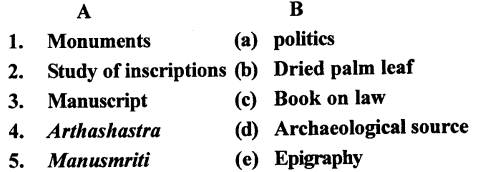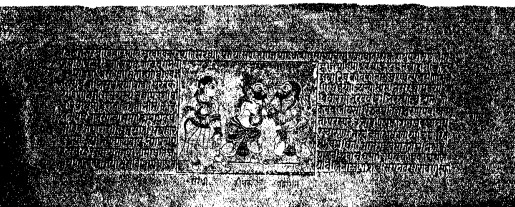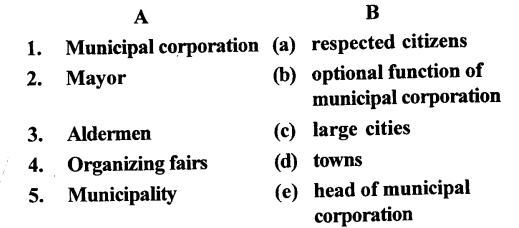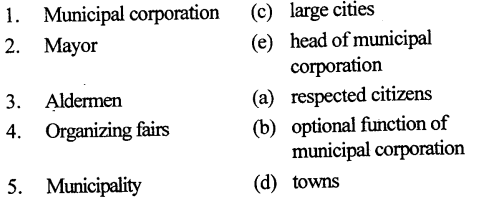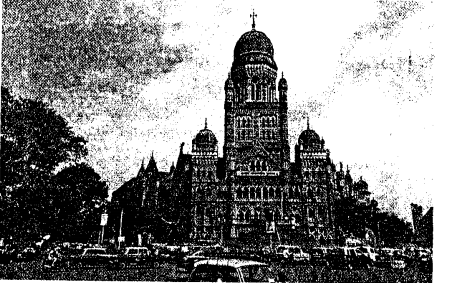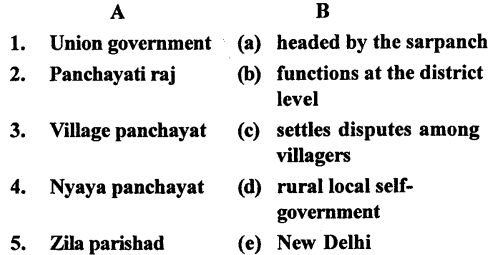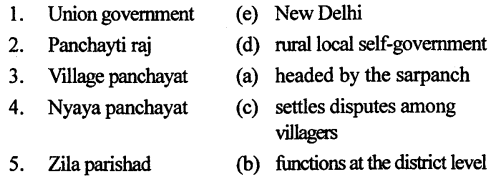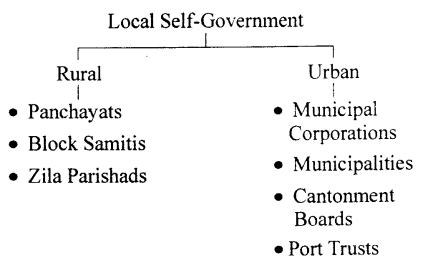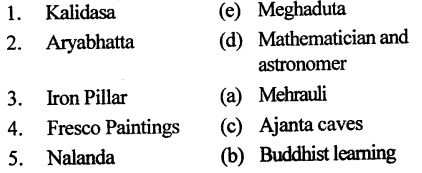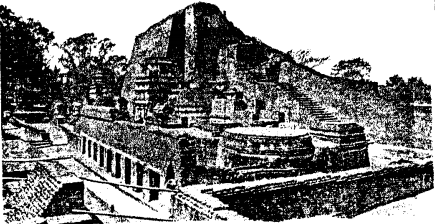The Trail History and Civics for Class 6 ICSE Solutions – Life in Prehistoric Times
ICSE SolutionsSelina ICSE SolutionsML Aggarwal Solutions
The Trail History and Civics for Class 6 ICSE Answers
Trail HistoryCivicsHistory & Civics Geography Biology Chemistry Physics Maths
Keywords
- Palaeolithic Age: It is the Old Stone Age in which humans made crude stone tools. It extended roughly from 500,000 , BCE to 10, 000 BCE.
- Mesolithic Age: It is the Middle Stone Age which was a transition period. It extended roughly from 10, 000 BCE to 8,000 BCE.
- Neolithic Age: It is the New stone Age in which human made well shaped and polished stone tools. It extended roughly from 8,000 BCE to 4,000 BCE.
- Barter System: It is the system of exchanging services and goods.
- Chalcolithic Age: It is the Copper-stone Age in which humans made tools of both copper and stone. It extended roughly from 4, 000 BCE to 2, 000 BCE.
- Bronze: It is the alloy of copper and tin. It is harder and stronger than copper.
EXERCISES
A. Fill in the blanks.
- In earliest times humans lived in caves and other natural shelters.
- The Old Stone Age humans made stone tools such as hammers, scrapers and axe-heads.
- To protect themselves from wild animals early humans began to form small groups.
- Primitive humans painted pictures of animals and hunting scenes on cave walls.
- The greatest achievement of early humans was the discovery of fire.
- The stone tools of the Neolithic Age were well-shaped and polished.
- Neolithic humans domesticated dogs, goats, sheep and cattle.
- Copper and stone tools were used during the Chalcolithic Age.
B. Match the following.
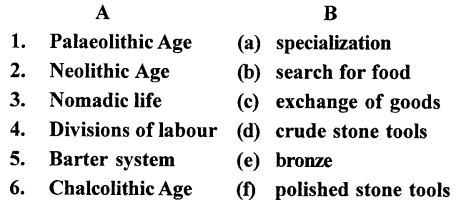
Answer:


C. Choose the correct answer:
1. In the earliest stages of physical development, humans walked on all twos/fours/threes.
Ans. In the earliest stages of physical development, humans walked on all fours.
2. Palaeolithic humans were potters/hunters and gatherers/ farmers.
Ans. Palaeolithic humans were hunters and gatherers.
3. The invention of the wheel/pots/toys was a major milestone in the evolution of the civilized human.
Ans. The invention of the wheel was a major milestone in the evolution of the civilized human.
4. Humans gave up their nomadic lives in the Palaeolithic/ Neolithic/Chalcolithic
Ans. Humans gave up their nomadic lives in the Neolithic Age.
5. The discovery of copper/iron/bronze ushered in a new age and a major advancement in the spread of human civilization.
Ans. The discovery of copper ushered in a new age and a major advancement in the spread of human civilization.
D. State whether the following are true or false.
- The humans of the Old Stone Age were hunters and food gatherers.
True. - Fire was discovered in the Neolithic Age.
False. Fire was discovered in the Palaeolithic Age. - The Neolithic humans used digging sticks and stone sickles.
True. - Humans did not know spinning and weaving in the New Stone Age.
False. Humans did know spinning and weaving in the New Stone Age. - Copper is harder and stronger than bronze.
False. Bronze is harder and stronger than copper.
E. Answer the following questions in one or two words/ sentences:
Question 1.
Name the periods into which the Stone Age can be broadly divided.
Answer:
The Stone Age can be broadly divided into four periods. They are following.
- Palaeolithic Age or Old Stone Age
- Mesolithic Age or Middle Stone Age
- Neolithic Age or New Stone Age
- Chalcolithic Age or Copper Stone Age
Question 2.
What were the stone tools used for by the people of the Paleolithic Age?
Answer:
The Palaeolithic humans were the first to make stone implements. Earlier, they used stones as they found them and then threw them away. Later, they began making crude unpolished stone tools. Large pieces of stones were shaped into hammers, scrapers and axe heads. These tools were used for cutting trees, killing and skinning animals, chopping meat and digging up roots.
Question 3.
Where did the early humans live in the Old Stone Age?
Answer:
Early humans did not build houses. To protect themselves from wild animals, they took refuge in caves or on trees. Caves protected them from the elements of nature and bad weather conditions.
Question 4.
What did the people of the Old Stone Age eat?
Answer:
The people of Old Stone Age did not know how to grow crops. Their food consisted of fruits, roots, nuts, eggs of birds and raw flesh of animals and birds.
Question 5.
What did the early humans in the Old Stone Age wear?
Answer:
During this period, humans did not wear clothes. Gradually, they learnt to use the barks of trees, leaves and animals skins to protect their bodies from the cold and the rain. Later still, they made clothes by stitching animal skins with bone needles.
Question 6.
How do we know that early humans were skillful artists?
Answer:
There is no doubt that early humans were skillful artist because the painted pictures of animals and drawn hunting scenes with great accuracy and skill on cave walls. They also engraved pictures on ivory horns and flat bones.
Question 7.
Mention two important occupations of humans in the New Stone Age.
Answer:
Agriculture and domestication of animals were two important occupations of humans in the New Stone Age.
Question 8.
What is the Copper-Stone age known as?
Answer:
The period, known as the Copper-Stone Age or Chalcolithic Age, was a brief but significant period in the life of humans. This period extended roughly from 4000 bce to 2000 bce.
It was an age during which both copper and stones tools were used. This age was a period of transition. It marked the end of the New Stone Age and the beginning of the age of metals.
F. Answer the following questions briefly.
Question 1.
Describe the life of prehistoric humans in the earliest times. When did the modern human Anally appear?
Answer:
In earliest times, prehistoric humans lived alone in caves or other natural shelters. They ate wild berries, roots, fruits, insects, worms and flesh of small animals. They used their bare hands to kill small animals. They did not wear any clothes and their bodies were covered with thick hair.
The modem humans (Homo sapiens) finally appeared about 200,000 years ago. They had mastered the art of making tools.
Question 2.
Describe the tools of the Palaeolithic Age. How did they differ from the tools of the Neolithic Age?
Answer:
During the Palaeolithic Age man made cmde unpolished tools. They shaped the large stone pieces into, hammers, scrapers and axe-heads.
Polaeolithic Age: Man made cmde stone tools like hand axes, choppers and flakes implements.
Neolithic Age: Man made better tools and implements like axes, sickle, arrow. They were beautiful well grooved and more useful.
Question 3.
How did early humans discover fire? How did this discovery help them?
Answer:
Early humans found that when two dry stones rubbed together produce sparks of fire. This discovery bought a great change in their life. They used it for roasting food, lighting his cave, keeping warm in cold season and frightening animals.
Question 4.
What important changes took place in the lifestyle of humans in the New Stone Age?
Answer:
In the New Stone Age human became a food producer from food gatherer. He gave up his cave and made huts of straw and mud and he also made better well grooved and more useful tools.
Question 5.
Give an account of the religious beliefs and practices of the people in the Neolithic Age.
Answer:
Early humans did not understand natural phenomena. They were afraid of lightning thunder, seasonal changes and natural calamities such as floods and earthquakes. They saw them as mysteries that were beyond their control. So they began to worship the forces of nature and sky, sun, rain, thunder, lightning, etc., became their gods. Ceremonies were performed to please them. Later, people began to bury the dead. Items of daily use such as pottery, tools, weapons, food, etc., were placed in the graves. This suggests that they may have believed in afterlife.
Question 6.
Agriculture and domestication of animals brought about dramatic changes in the life of humans. Explain.
Answer:
Agriculture— The discovery of Agriculture has a great importance in the life of humans. The man now become a food producer instead of a food-gatherer and thus, he began to lead a settled life. He now grow com, vegetables and fruits near his hut.
Domestication— The Domestication of animals help the humans in many ways Dogs, goats, sheep and cattle were domesticated. These animals supplied milk, meat and skins. Bullocks, donkeys and horses were later used to plough the fields. In these ways agriculture and domestication brought dramatic changes in the life of humans.
Question 7.
Why did early humans make pots? How did the invention of the potter’s wheel affect the art of pottery making?
Answer:
Early humans make pots because they needed pots to store grains, water and food.
The invention of the potter’s wheel was boon for potters. They made pots of various shapes and sizes, pots were often decorated with floral designs and geometrical patterns.
Question 8.
Describe the following features of the Neolithic Age:
(1) Invention of the wheel
(2) Settlements and early villages
Answer:
- The discovery of the wheel was an important achievement of the man in the Neolithic Period.
It brought a rapid progress in making beautiful pots. The wheel was used in horse-carts and bullock-carts.Which made transport quite easy and quick. The wheel was used for carrying loads and also used for spinning and weaving. In this way the invention of the wheel was a major achievement of man in his march towards civilization. - Agriculture and domestication of animals brought about a dramatic change in the life of early humans. They gave up their nomadic lifestyle and settled down. They built mud houses with thatched roofs and began to live in groups in small villages. The population increased and human life became more organized.
Question 9.
Write short notes on the following:
(1) The barter system
(2) Social life during the Neolithic Age
Answer:
- The barter system:It is the system of exchanging services and goods. For example, the potters got food grains in exchange for pots and vice versa.
- Social life during the Neolithic Age: From the earliest times, people had been living in groups. It became necessary to have a code of conduct to regulate and control the activities of the people. These rules became established customs. The oldest, wiser or the strongest man in the village was chosen as the village head man.He maintained law and order in the village and protected the people from enemies.
Question 10.
Mention the chief features of the Chalcolithic Age.
Answer:
Chalcolithic Age is known as the Copper-Stone Age. It was a brief but significant period in the life of man.
The main features of the Chalcolithic Age were following.
- In Chalcolithic Age discovery of metals and improved implements led to the development of agricultural skills to a high degree.
- Chalcolithic Settlements were rural in nature Society became more complex and was classified into different groups.
G Picture study
The picture on the right shows sonic stone implements.
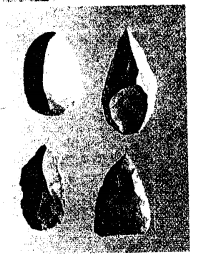
1. To which prehistoric age do these implements belong?
Ans. These implements belongs to Neolithic Age.
2. How are these implements different from those belonging to the previous age?
Ans. These implements were well shaped and polished and more useful than belonging to the previous age.
3. What purpose did these tools serve?
Ans. Humans used these tools to till the soil and to reap the crops.
4. Mention five important changes that took place in the lifestyle of humans of this period.
Answer:
- In Neolithic age man became a food producer from food gatherer.
- Man gave up his cave and made huts of straw and mud near his fields.
- Man made better, beautiful well grooved, and more useful tools.
- The invention of wheel made the life easier and more comfortable.
- Man began to live in groups and human life became more organized.
OTHER IMPORTANT QUESTIONS
Question 1.
Define New Stone Age?
Answer:
New Stone Age was the period when human made well shaped and polished tools .
Question 2.
Name the tools and implement used by man when he became a food producer ?
Answer:
The names of the tools are sickle hand axe, choppers, flakes, bows and arrows.
Question 3.
In what respect did the old stone age implement differ from the implements used in the New stone Age?
Answer:
The implements of New Stone Age differ from implements of Old Stone Age as the New Stone Age implements were made of good quality. They were polished. They were more sharpened. Wooden handles were fixed to the axes. Sickles were also made.
Question 4.
How was the discovery of metals useful to the Early Man?
Answer:
The discovery and use of metal is an event of great importance in the history of mankind.
- The use of metal greatly helped man in the field of carpentry. This led to the invention of the wheel.
- The discovery of metals greatly helped man in the field of agriculture. With the help of better types of plough heads hoes and other implements made of metals he could now sow, reap and harvest different crops on a much better way with the help of better weapons of metals.
- He could easily defend himself from wild animals.
Question 5.
Describe the social life of early humans?
Answer:
Early humans began to form small groups to protect themselves from wild animals. They lived a nomadic life, moving from place to place in search of food.
Question 6.
When the Iron Age began and what is its importance?
Answer:
The Iron Age began in about 1,200 BCE when iron implements began to be used. Discovery of iron encouraged the growth and spread of civilization.
Question 7.
Distinguish between Food gatherers and Food Producer.
Answer:
Food Gatherer
- Food gatherer is one who wanders from place to place in search of food.
- Food gatherer is one who wanders from place to place in search of food. As a food gatherer, man lived by hunting animals and collecting wild.
Food producer
- Food producer is one who producer plants, and crops in fields to meet his food requirements.
- In neolithic age and there after man stopped being a nomad and began to settle down at one place as an agriculturist and began to domesticate animals.
